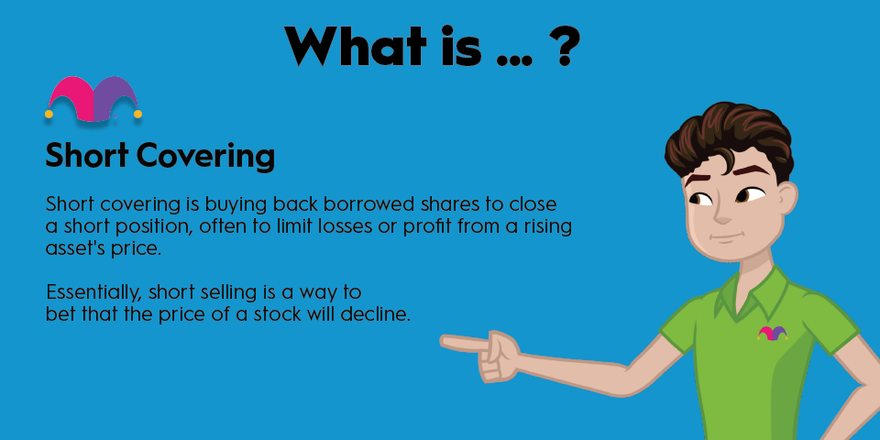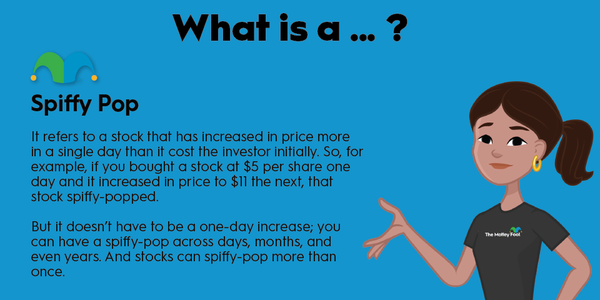Short covering, also known as buying to cover, occurs when an investor buys shares of stock in order to close out an open short position. Once the investor purchases the quantity of shares that he or she sold short and returns those shares to the lending brokerage, then the short-sale transaction is said to be covered.

What is short covering?
What is short covering?
A short cover is when an investor sells a stock that he or she doesn't own, it's known as selling the stock short. Essentially, short selling is a way to bet that the price of a stock will decline. The way to exit a short position is to buy back the borrowed shares in order to return them to the lender, which is known as short covering. Once the shares are returned, the transaction is closed, and no further obligation by the short seller to the broker exists.
Traders decide to buy to cover their short positions for several reasons. If a stock's price drops, as short sellers predict, then the company's shares can be purchased for less than the trader owes the brokerage for the borrowed shares. In this instance, covering the short locks in a profit for the trader. Short sellers are aware that shorting a stock creates the potential for unlimited losses since their downside risk is equal to a stock price's theoretically limitless upside. A stock rising in price can also prompt traders to cover their short positions in order to limit their losses.
How short covering works
How short covering works
Let's say you have a feeling that BadCo's stock price, currently trading at $50, is about to drop. You sell short -- meaning borrow from a broker and resell -- 100 shares of BadCo at a price of $50 per share, which nets you $5,000. When BadCo's share price declines to $40, you buy 100 shares, which costs you $4,000. You return the 100 borrowed shares to your broker to cover your short position, and earn a profit of $1,000.
Too much short covering can cause a short squeeze
A short squeeze can occur when many traders have a negative outlook on a company and choose to sell short the stock. A practice known as naked short selling allows investors to sell short shares that have not actually been borrowed, which can push the number of shares sold short above the company's actual share count. If sentiment about the company changes and too many investors attempt to simultaneously cover their short sales, that can put a "squeeze" on the number of shares available for purchase, causing the particular stock price to spike to a higher price. The original brokerages that lent the shares can also decide to issue margin calls, meaning that all shares they loaned must be returned immediately. This further increases the number of investors trying to cover their short positions, which can cause further sharp gains in the company's share price.
Margin Call
Short covering example
Short covering example
As just one example, many traders held a negative outlook on the brick-and-mortar video game retailer GameStop (GME 6.16%) because the company was losing sales to digital distribution channels. Video game players are increasingly opting to download games instead of buying them at stores, and the company has been struggling to diversify into new sales channels. Roughly 70 million shares of GameStop stock had been sold short in early 2021 despite the company having only 50 million shares of stock outstanding.
GameStop's business outlook defied expectations by improving, and this, coupled with coordinated buying among Reddit forum members, caused the stock's price to begin to significantly increase. The investment firms with large short positions, among many other investors, clamored to cover their shorts. The stock's price increased by nearly 1,700% in less than a month, enabling investors who owned GameStop stock outright to enjoy incredible gains. But the GameStop example also illustrates the risk of assuming that short covering is always possible and proves that not being able to cover a short position can result in massive losses.
Identifying successful short squeeze plays tends to be difficult, and most investors shouldn't structure any significant portions of their portfolios around these types of trades. Investors are generally much better served by backing strong companies with favorable business outlooks.




































































































